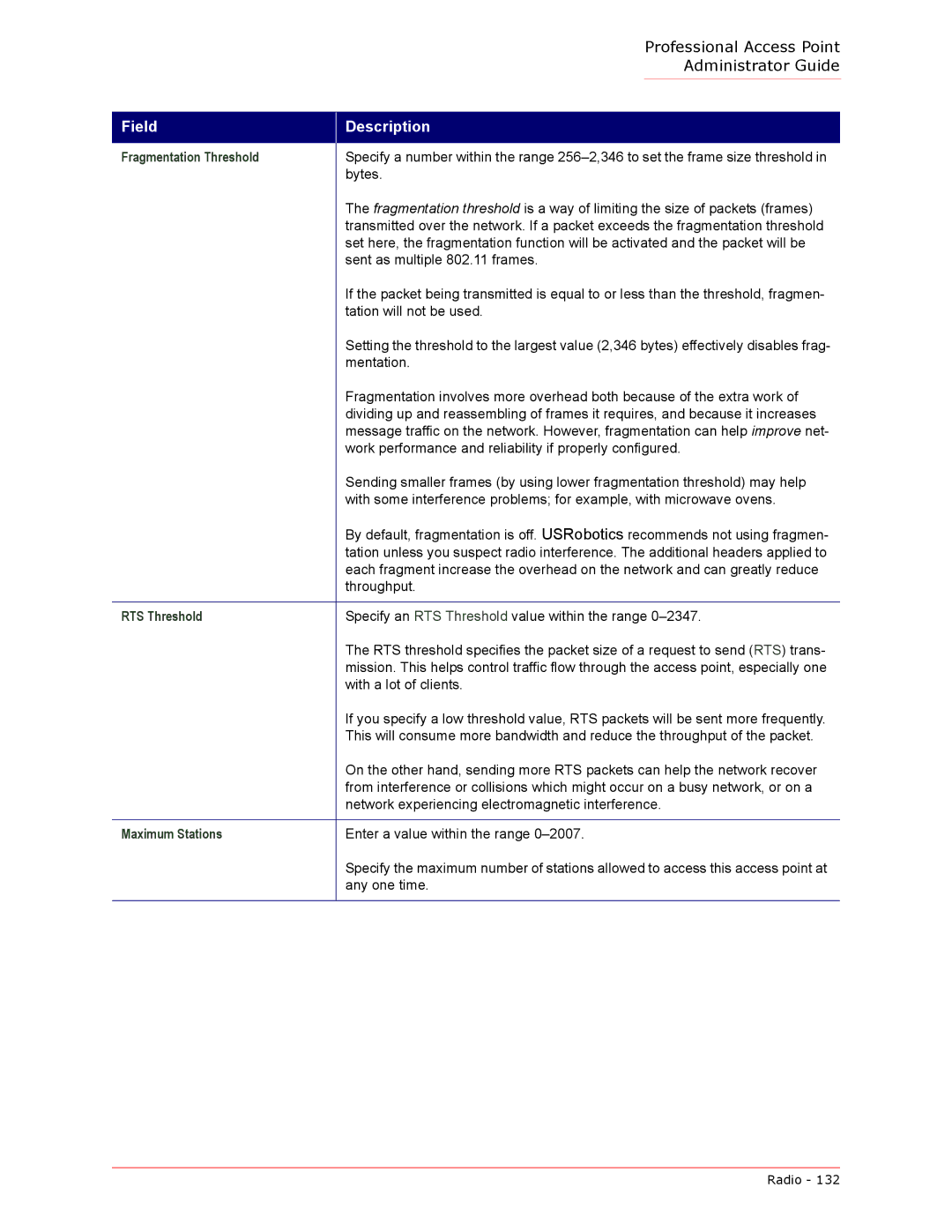
Professional Access Point Administrator Guide
Field
Description
Fragmentation Threshold | Specify a number within the range |
| bytes. |
| The fragmentation threshold is a way of limiting the size of packets (frames) |
| transmitted over the network. If a packet exceeds the fragmentation threshold |
| set here, the fragmentation function will be activated and the packet will be |
| sent as multiple 802.11 frames. |
| If the packet being transmitted is equal to or less than the threshold, fragmen- |
| tation will not be used. |
| Setting the threshold to the largest value (2,346 bytes) effectively disables frag- |
| mentation. |
| Fragmentation involves more overhead both because of the extra work of |
| dividing up and reassembling of frames it requires, and because it increases |
| message traffic on the network. However, fragmentation can help improve net- |
| work performance and reliability if properly configured. |
| Sending smaller frames (by using lower fragmentation threshold) may help |
| with some interference problems; for example, with microwave ovens. |
| By default, fragmentation is off. USRobotics recommends not using fragmen- |
| tation unless you suspect radio interference. The additional headers applied to |
| each fragment increase the overhead on the network and can greatly reduce |
| throughput. |
|
|
RTS Threshold | Specify an RTS Threshold value within the range |
| The RTS threshold specifies the packet size of a request to send (RTS) trans- |
| mission. This helps control traffic flow through the access point, especially one |
| with a lot of clients. |
| If you specify a low threshold value, RTS packets will be sent more frequently. |
| This will consume more bandwidth and reduce the throughput of the packet. |
| On the other hand, sending more RTS packets can help the network recover |
| from interference or collisions which might occur on a busy network, or on a |
| network experiencing electromagnetic interference. |
|
|
Maximum Stations | Enter a value within the range |
| Specify the maximum number of stations allowed to access this access point at |
| any one time. |
|
|
Radio - 132
